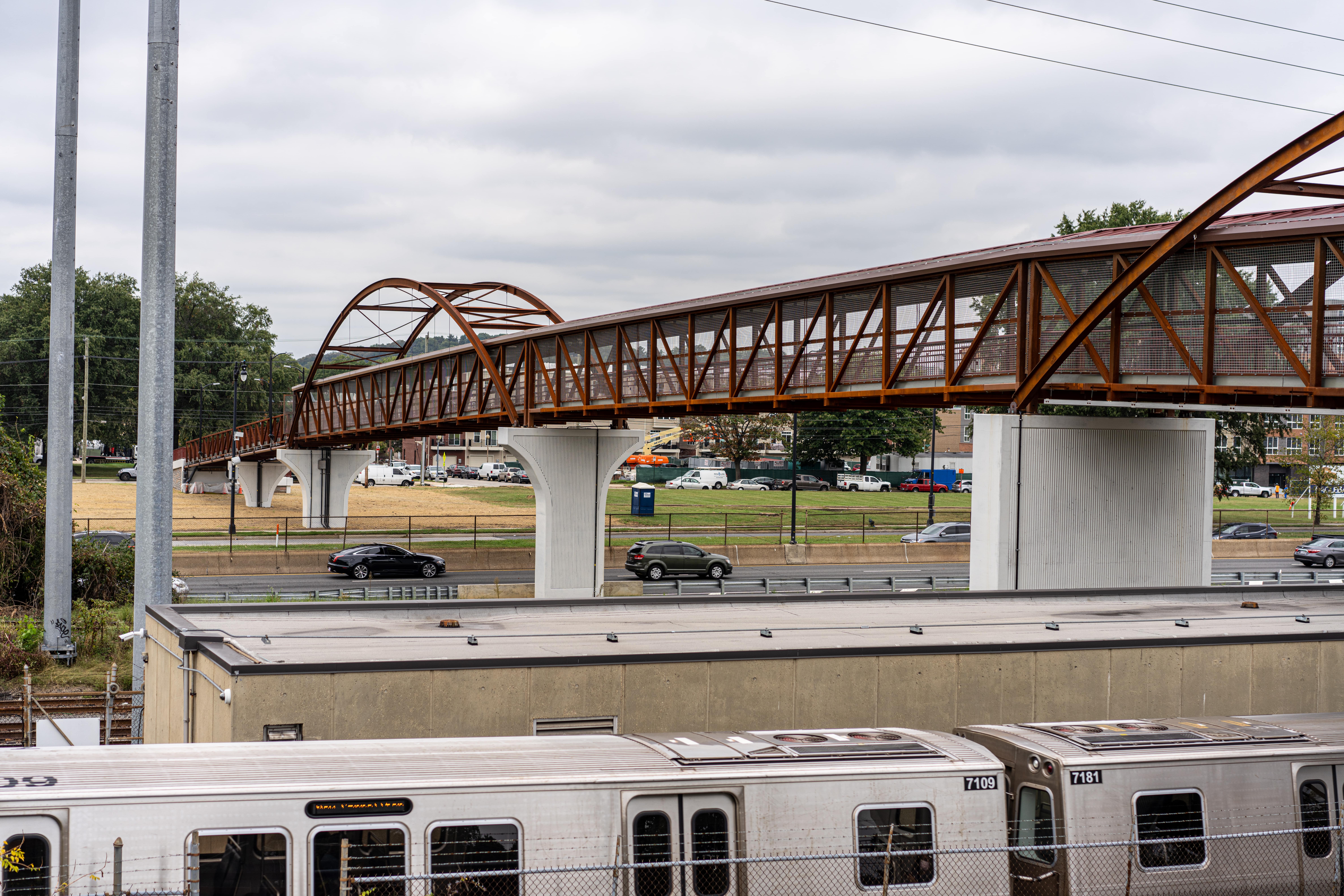 Slab or double tee? If you are considering replacing your deteriorated rail platform or constructing a new one with fiber reinforced polymer (FRP) rail platforms, it’s a good question. Composite Advantage FRP rail platforms are available in both slab-style and tee beam members offering tremendous design flexibility to meet your requirements. The answer to the “Slab vs. Double Tee” question is specific to your project, so we’ve summarized some factors to help you answer that question.
Slab or double tee? If you are considering replacing your deteriorated rail platform or constructing a new one with fiber reinforced polymer (FRP) rail platforms, it’s a good question. Composite Advantage FRP rail platforms are available in both slab-style and tee beam members offering tremendous design flexibility to meet your requirements. The answer to the “Slab vs. Double Tee” question is specific to your project, so we’ve summarized some factors to help you answer that question.
Span Length
Perhaps the most important factor in selecting between a tee beam or slab-style FRP rail platform is the span between supports. FRP slab-style members can be produced in a range of thicknesses, but the “standard” for FRP rail platforms is about 8-inches - designed to replace the typical, deteriorated concrete platforms they replace. FRP slab-style members can be designed/manufactured to span up to about 15-feet. Beyond 15-feet, slab-style members are not cost effective.
For anything over 15-feet, the double or even triple-tee FRP members make the most sense, which can span up to 50-feet. Composite Advantage has supplied FRP double/triple tee beams for stations with spans up to 36-feet and is currently working on a project with 40-foot spacing between piers.
New vs. Rehab
The selection of an FRP slab or tee beam will often be based on the type of project. For the construction of a new station, it’s almost always most cost effective to space the foundations/piers as far apart as possible and construct the platforms from FRP double tees. When removing or replacing a deteriorated platform, the answer is not always obvious. Many existing concrete platforms are supported on steel stringers, which are supported on concrete piers. If the steel stringers are in good shape, then an FRP slab is a good choice. However, if the steel stringers are deteriorated and slated to be replaced or require extensive repairs, then the most cost-effective approach may be removing the stringers and installing a double tee to span from pier-to-pier. Coastline Composites and Composite Advantage regularly work with commuter rail agencies to help them evaluate these options.
Composite Advantage has a long track record for FRP rail platforms dating back nearly a decade when owners began looking for a corrosion resistant, low maintenance product with a long-life cycle. In 2017, they introduced the FRP double tee, a structural member which they were very familiar and realized would be a perfect fit for longer rail platform after customer requests. A double tee beam is a load-bearing structural member that looks like two T-beams placed side by side. Two vertical stems and a horizontal slab, called a flange, are integrally molded to create a structure that can support heavy loads. This configuration has been available in precast concrete for more than 50 years. Design flexibility and light weight are advantages that make FRP double tees stand out. Our double tees are up to 70 percent lighter than traditional precast concrete double tees. This translates to rapid installation for time-sensitive projects that can’t afford lengthy down times.
Here’s a quick slab and tee beam comparison:
|
|
FRP Slab |
FRP Tee Beam |
|
Typical Thickness/Depth |
6 – 8 inch |
15 – 38 inch |
|
Maximum Span |
15 feet |
50 feet |
|
Typical Weight |
12 psf |
15-22 psf |
One of the biggest advantages of using FRP rail platforms, besides corrosion-resistance, is their light weight which enables fewer (and larger) FRP panels to be placed more quickly in tighter spaces, along with smaller construction equipment leading to limited disruptions to commuter service. Composite Advantage manufactures their FRP rail platforms to NFPA 130 and ASTM E-84 Class 1 standards for fire resistance. Nonslip surfaces for passenger safety are part of the package. Tactile warning tiles and rubbing boards are usually installed in the factory before being shipped to the worksite. They also provide FRP panels with edges that follow track alignment, cross-sloped surfaces, means for connecting guard rails and other equipment, including retractable edges
Coastline Composites and Composite Advantage will be glad to swiftly respond to your questions or discuss your rail project, so please contact us.